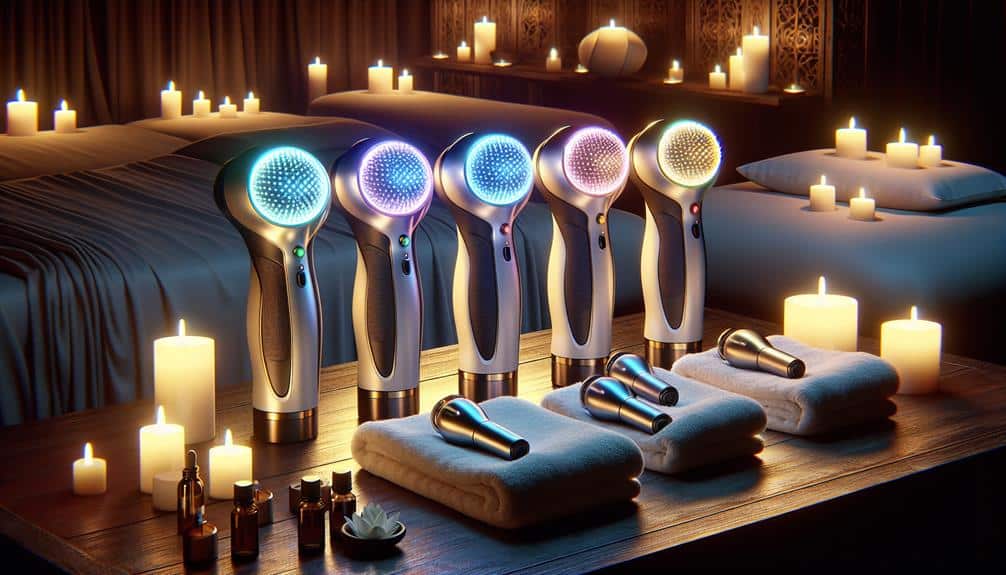Is the thought of using a massage gun causing knots in your muscles? Breathe easy, we’ve got your back (and your biceps, shoulders, calves…). This blog post has been written with you in mind – anyone who has or is planning to buy a massage gun but isn’t quite sure how to use it. So, stick around to untangle the mystery of massage guns and add a whole lot of ‘me-time’ to your schedule.
Key Takeaways
- Learning the basics of a massage gun helps in better utilization and leveraging its benefits.
- Using a massage gun involves picking the right attachment, positioning it correctly, and balancing between intensity and comfort.
- It’s crucial to adhere to safety measures like not using the gun on bones or inflamed areas and to know when to ease up.
- Utilizing different techniques and attachments for different body parts enhances the effectiveness of the massage gun.
Understanding the Mechanism of a Massage Gun
A massage gun is an innovative device that employs a mechanism known as percussive therapy. This methodology works by delivering strong pulses and vibrations deep into your muscles offering relief and promoting healing. The quintessential components of a massage gun include the motor, the amplitude of the gun’s head, and an assortment of attachments designed to address the specific needs of your body.
It’s essential to comprehend these elements and how they work in concert in a massage gun, to optimize your massage sessions. Getting to the heart of these dynamics enables you to customize your massage encounters, assuring every session meets your requirements and provides maximum advantage. After all, a massage gun is more than just an apparatus; it’s a wellness tool specially crafted for your well-being. You can deepen your understanding of these techniques and enhance your massage experiences by reading this comprehensive guide on how massage guns work.
Steps to Using a Massage Gun Correctly
Harnessing the power of a massage gun doesn’t have to be complicated. The first stride is to select the most suitable attachment for the area you intend to treat and adjust the device’s settings to your comfort level. It is a best practice to position the massage gun perpendicular to the targeted muscle area applying gentle pressure and allowing the device to glide over your body for about two minutes.
It’s crucial to remember that the ultimate aim is to relax and loosen stiff muscles, not to cause discomfort or pain. A slight and temporary sensation of soreness is normal, but if the discomfort continues, it signals that you might be using excessive pressure. Navigating a balance between intensity and comfort is vital for a positive massage gun experience.
Safety Tips and Precautions while Using a Massage Gun
Knowledge about the correct usage of a massage gun is crucial, but equally important are safety precautions to mitigate potential injuries. Some fundamental guidelines involve averting the use of the massage gun on bone structures or areas with acute inflammation. Also, it’s imperative not to press too hard and always be receptive to your body’s signals.
When you’re in discomfort, do lighten up the pressure. Shuffling your positions with frequency is vital to prevent numbing any particular area. Moreover, if you have any medical conditions, make sure to always seek professional advice before beginning a massage gun routine. Ultimately, the safety and efficacy of the device are tied back to the user’s wisdom and vigilance.
Advanced Techniques and Tips for Effective Massage Gun Use
For those already confident with their massage gun prowess and seeking to further capitalize on their investment, there are a myriad of advanced techniques to employ. Diversity in approach when treating different body parts can significantly enhance your muscle relief journey. For instance, you can utilize the bullet head attachment for focusing on trigger points, whereas the flat head attachment is specifically designed to cater to larger muscle groups.
It’s important to understand that the various muscle groups in your body likely require different pressure levels and attachments. As you get more comfortable with your massage gun, you’ll develop intuitive skills about the most favorable ways to administer massage for various muscle groups, ensuring each session is both pleasurable and effective.
Conclusion
Enjoying a professional-grade massage at home is now possible with a massage gun. Understanding its mechanism, using it correctly, following the safety tips, and implementing advanced techniques are the keys to maximizing your therapeutic experience. Just remember, using a massage gun is not about endurance, it’s about relaxation and recovery. So listen to your body, take it easy, and enjoy your journey of muscle recovery and stress relief.
| Step | Description |
|---|---|
| 1 | Select the appropriate attachment for the targeted area. |
| 2 | Adjust the device settings to your comfort level. |
| 3 | Position the massage gun perpendicular to the muscle. |
| 4 | Gently glide the device over the body for about two minutes. |
| 5 | Maintain a balance between intensity and comfort. |
| 6 | Be aware of any discomfort and adjust pressure accordingly. |
| 7 | Avoid using the device on bones or inflamed areas. |
| 8 | Seek professional advice if you have medical conditions. |

